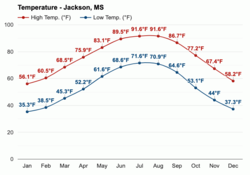Yes, I think I will go with a 3-cu-ft firebox, so a "30" model.
Well, on average MS is not really cold in the winter (compared to the Northern States), but basically anytime outside temperatures drop below your comfort temperature (of, say, 72F) for more than a few hours, you need some form of heat source to keep the house comfortable. And that does happen quite a lot in winter, although only between November and February. So three months of the year.
https://en.wikipedia.org/wiki/Jackson,_Mississippi#Climate
I totally get it that with us paying around $100-150 for natural gas in winter, a Chinook will never pay for itself. Call it a luxury item, then ;-)



